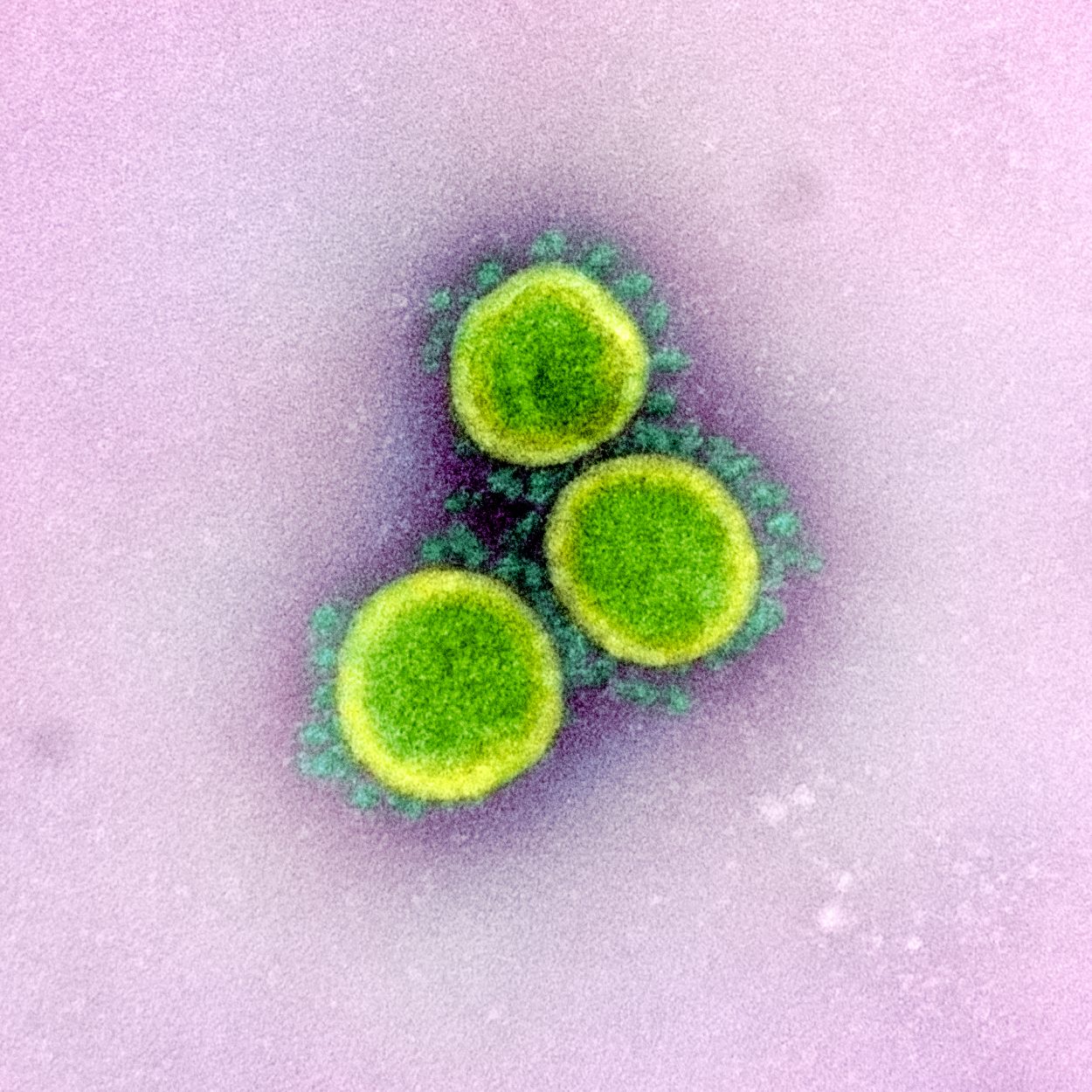
Transmission electron micrograph of SARS-CoV-2 virus particles, isolated from a patient. Image captured and color-enhanced at a NIAID research facility. (Courtesy National Institute of Allergy and Infectious Diseases)
Ketchikan officials downgraded the community’s pandemic risk level to its lowest mark Wednesday.
The low risk level indicates little presence of the coronavirus in the community — Ketchikan officials have reported only a handful of new COVID-19 cases in the past week. That’s despite administering nearly 1,000 tests.
None of the area’s recent cases have been linked to community spread, indicating that testing and tracing efforts are finding success.
The return to low risk doesn’t have many immediate consequences for residents or business owners. Voluntary capacity recommendations for bars and restaurants are lifted, for now. Ketchikan’s borough-owned gym will also return capacity limits in its weight and cardio rooms to normal, the borough’s animal shelter is lifting its capacity limit and borough buses will increase their capacity, as well.
Local officials say the risk level is partially intended to help people decide for themselves how to best reduce their risk of catching COVID-19. Ketchikan-area mayors and senior municipal officials determine the risk level after consulting a variety of pandemic indicators.
The risk level rose a tick on October 28 of last year to “moderate.” A week later, officials raised the threat level to “high” as Ketchikan’s largest coronavirus outbreak to date spread. That triggered a host of public building closures and led Ketchikan’s school board to send some students home three days per week. The level fell to “moderate” at the end of November as the outbreak faded.
State health officials say Alaska’s overall pandemic alert level remains high. And much of the state is still seeing widespread community spread of the virus. As of Wednesday, southern Southeast Alaska and Juneau are the only two regions NOT at a “high” state alert level. The state’s dashboard, which uses different metrics than local officials, puts southern Southeast and Juneau at a “moderate” risk level.





